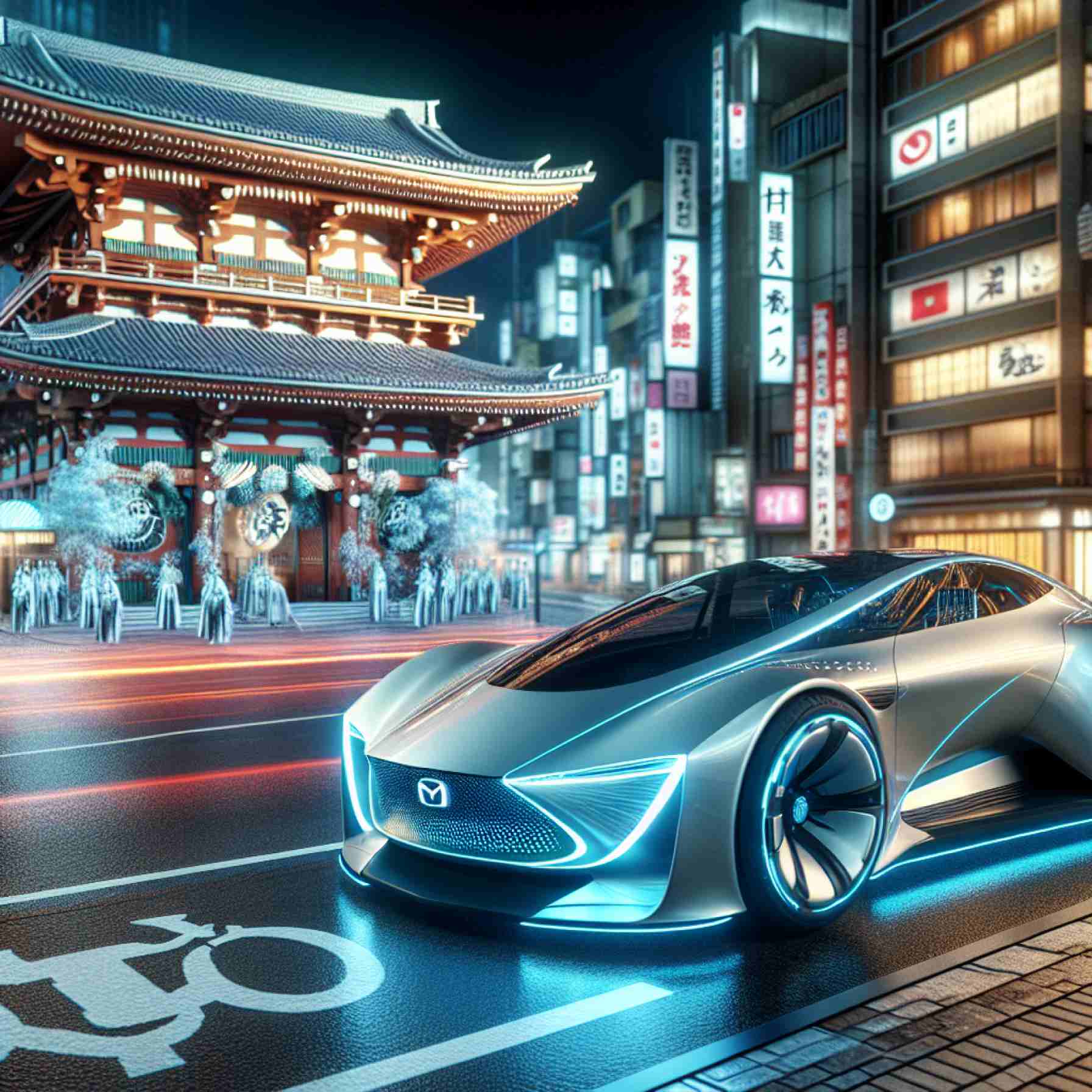- Mazda is adopting the North American Charging Standard (NACS), Tesla’s solution, for future electric vehicles in Japan, following its prior decision in North America.
- This strategic shift allows Japanese Mazda customers access to Tesla’s Supercharger network, enhancing EV charging efficiency and accessibility by 2027.
- The adoption of NACS in Japan signals a move away from the CHAdeMO standard, suggesting a potential consolidation of charging protocols.
- Mazda’s partnership with Tesla echoes similar decisions by other companies, such as Sony Honda Mobility, in adopting NACS for their vehicles.
- A unified charging standard could simplify the EV landscape, fostering easier adoption and potentially positioning Japanese automakers as global leaders.
- Mazda’s decision reflects a broader vision of technological innovation and streamlined infrastructure to accelerate the electric revolution.
A quiet revolution beckons on the electric roads of Japan. In a decisive leap forward, Mazda has resolved to embrace the North American Charging Standard (NACS), Tesla’s famed charging solution, for its future electric vehicles in Japan. This move mirrors Mazda’s earlier commitment to the NACS in North America, following a trend initiated by automotive behemoth Ford.
This is not merely a technical adjustment; it signals a potential shift in the Japanese EV landscape. Mazda’s strategic partnership with Tesla will allow its Japanese customers to tap into Tesla’s robust Supercharger network, a game-changer in the realm of EV charging. By 2027, Mazda’s battery electric vehicles in Japan will sport the NACS connector, positioning them at the cutting edge of charging efficiency and accessibility.
Imagine driving through the bustling streets of Tokyo or the serene landscapes of Hokkaido, knowing that charging your vehicle will be as straightforward as refueling a conventional car. This ease comes as the CHAdeMO standard, which once dominated Japan and some global markets, quietly fades into obsolescence.
Mazda’s decision is not isolated. Last year, Sony Honda Mobility under its AFEELA EV brand also opted for the NACS standard in Japan. As such innovations gain traction, the patchwork of charging standards that has long confused and constrained EV adoption could finally see coherence with a unified approach.
While Tesla’s connector finds new markets and proponents, the overarching theme is clear: a more streamlined network fuels the electric revolution. In a landscape where technology often races ahead of infrastructure, partnerships like Mazda and Tesla’s promise to bridge the gap, allowing innovation to accelerate unchecked by logistical roadblocks.
The wisdom in Mazda’s move lies in its potential to become the catalyst for a nationwide embrace of a unified charging protocol. As Japanese automakers eye the global stage, adopting a universal standard might just propel them to new heights and possibilities.
This isn’t just about wires and ports; it’s about vision. In aligning with NACS, Mazda is not just charging their vehicles; they’re charging into the future.
The Electric Revolution in Japan: How Mazda’s Shift to NACS is Changing the Game
Mazda’s Strategic Move Towards NACS: A Deeper Dive
Mazda’s decision to adopt the North American Charging Standard (NACS) in Japan marks a significant pivot in the country’s electric vehicle (EV) landscape. This strategic partnership with Tesla is not merely a technical alignment but a visionary move anticipating the future of EV infrastructure in Japan. Let’s explore the broader implications of this shift, along with practical considerations for consumers and industry forecasts.
Why NACS Over CHAdeMO?
1. Charging Speed and Efficiency: NACS, widely recognized for its fast-charging capabilities, offers significantly reduced charging times compared to the older CHAdeMO standard. Faster charging means less downtime for drivers, enhancing the overall convenience of owning an electric car.
2. Network Availability: With Tesla’s expansive Supercharger network, NACS users have access to a comprehensive and reliable charging infrastructure. This accessibility can alleviate range anxiety for potential EV buyers, a critical factor in consumer decision-making.
3. Global Alignment: As global markets increasingly favor NACS over other standards, Japanese manufacturers aligning with this trend can support their international competitiveness, particularly in North American and European markets.
Real-World Use Cases
– Tourism and Urban Mobility: Travelers in Japan can experience seamless electric mobility, reducing the environmental impact of tourism. Urban areas, notorious for heavy traffic and pollution, stand to benefit from cleaner air and less noise pollution.
– Commercial Fleets: Businesses operating delivery or transport services can reduce operational costs by opting for EVs with quicker charging downtime, improving efficiency.
Industry Trends and Market Forecast
– Market Growth: With Mazda and Honda adopting NACS, expect other manufacturers to follow suit. This alignment could drive a surge in EV sales, pushing infrastructure improvements.
– Investment in Charging Infrastructure: As the demand for NACS-compatible chargers increases, investments in infrastructure are expected to rise, potentially spurring government incentives and private sector partnerships.
Pros and Cons Overview
Pros:
– Enhanced charging speeds reduce vehicle downtime.
– Greater compatibility with a widely adopted global standard.
– Access to Tesla’s extensive Supercharger network.
Cons:
– Existing CHAdeMO-compatible vehicles face potential legacy support issues.
– Initial transition costs for manufacturers and consumers adapting to a new standard.
Consumer Insights and Practical Tips
– Transitioning to NACS: If you own a CHAdeMO-compatible vehicle, consider trade-in incentives likely offered by manufacturers eager to shift to the new standard.
– Planning Ahead: For prospective EV buyers, staying informed about charging infrastructure developments in your area can enhance the ownership experience.
The Path Forward for Japan’s EV Market
This transition towards a unified charging standard is expected to not only simplify the EV adoption process but also enhance Japan’s position in the global electric vehicle market. For consumers, the shift promises a more convenient, efficient, and environmentally friendly driving experience.
For more updates on the latest in electric vehicle technology and infrastructure, visit Tesla and Mazda.
By 2027, as Mazda’s rollout of NACS-equipped vehicles unfolds, Japanese consumers and businesses alike can prepare for a new era of electric mobility. Embrace this forward-thinking shift by staying ahead of trends and making informed decisions today.
